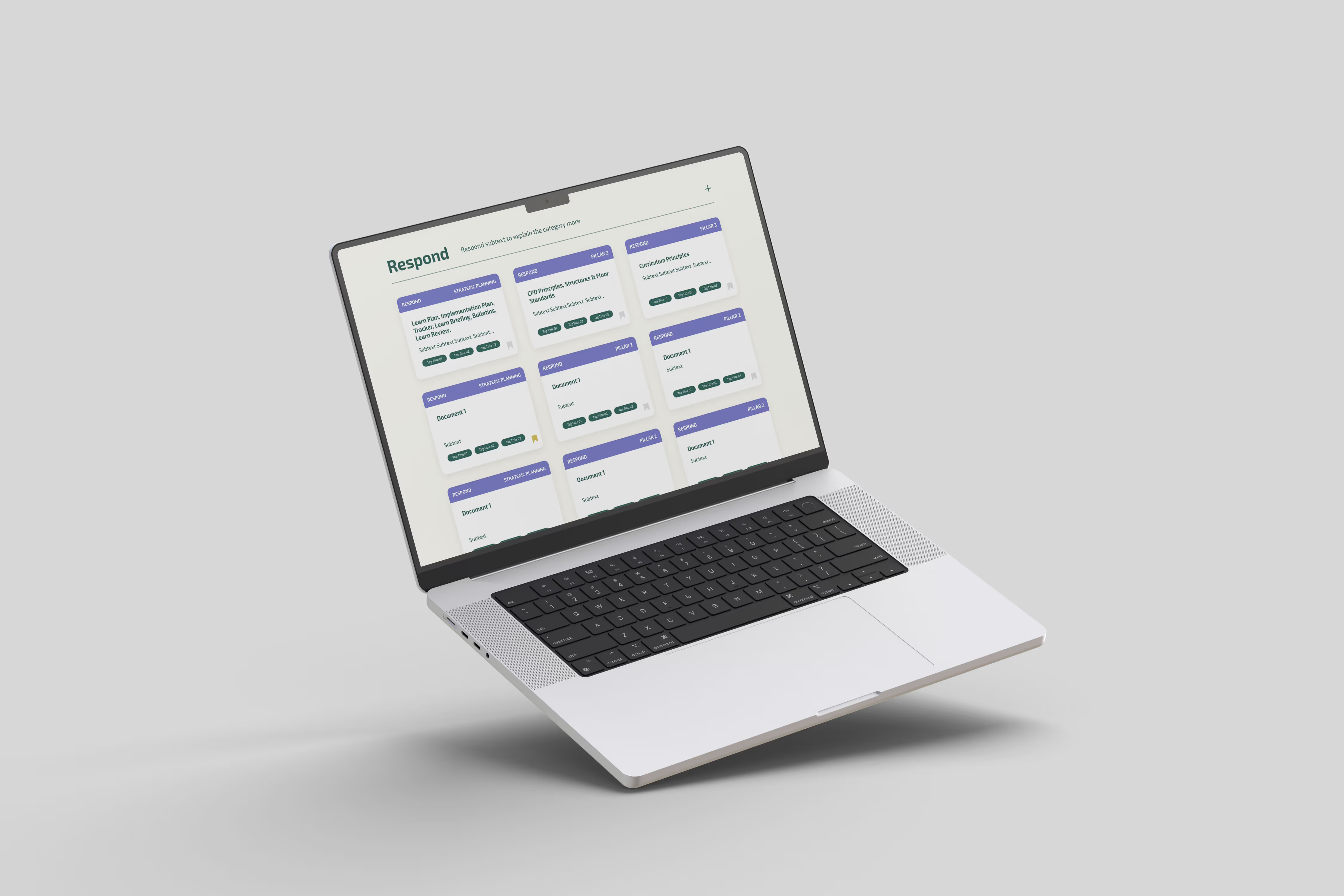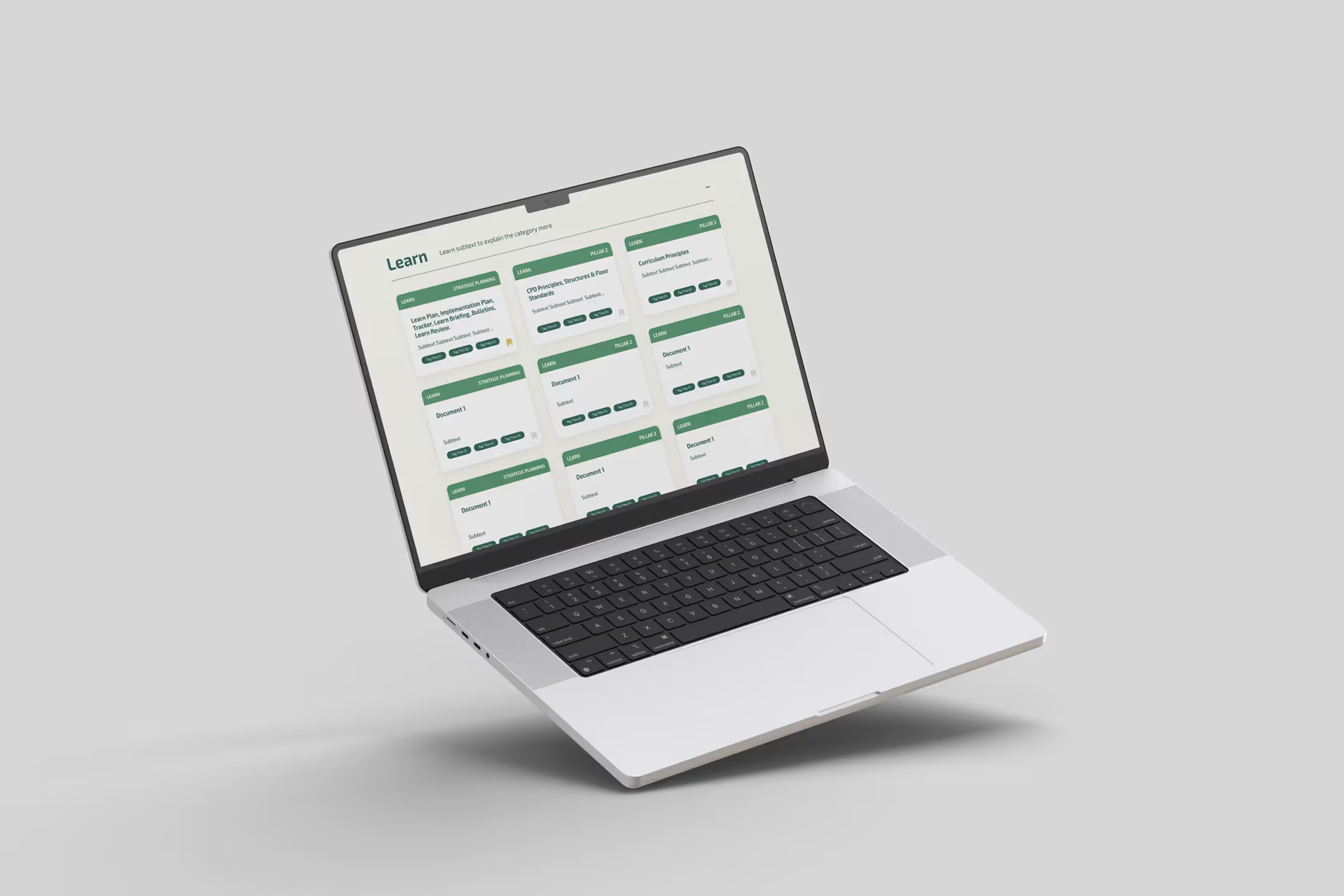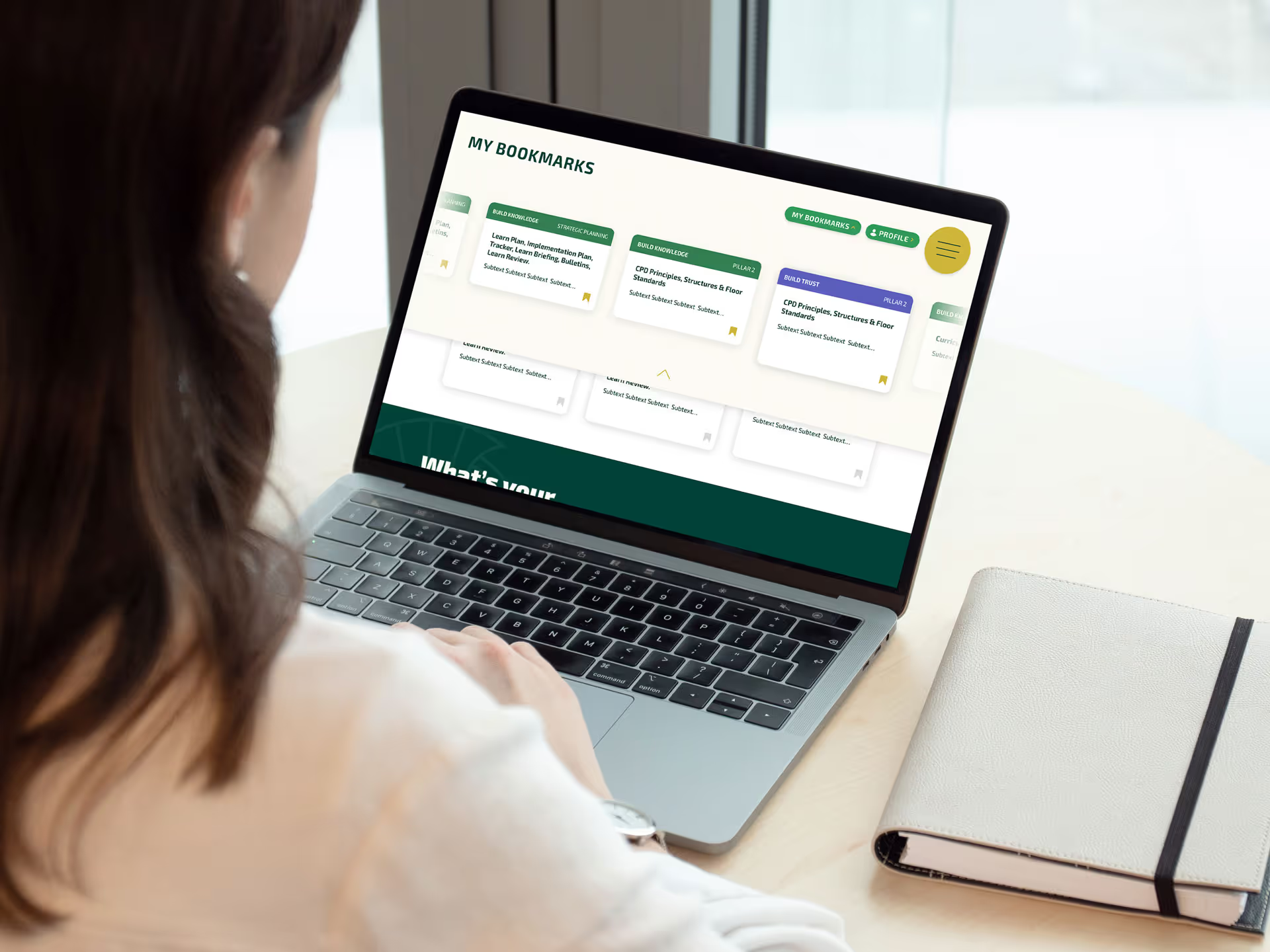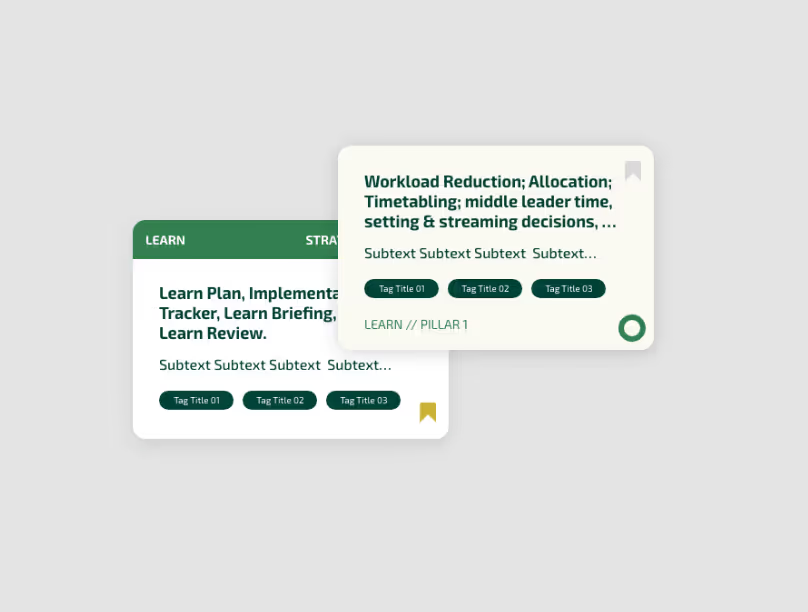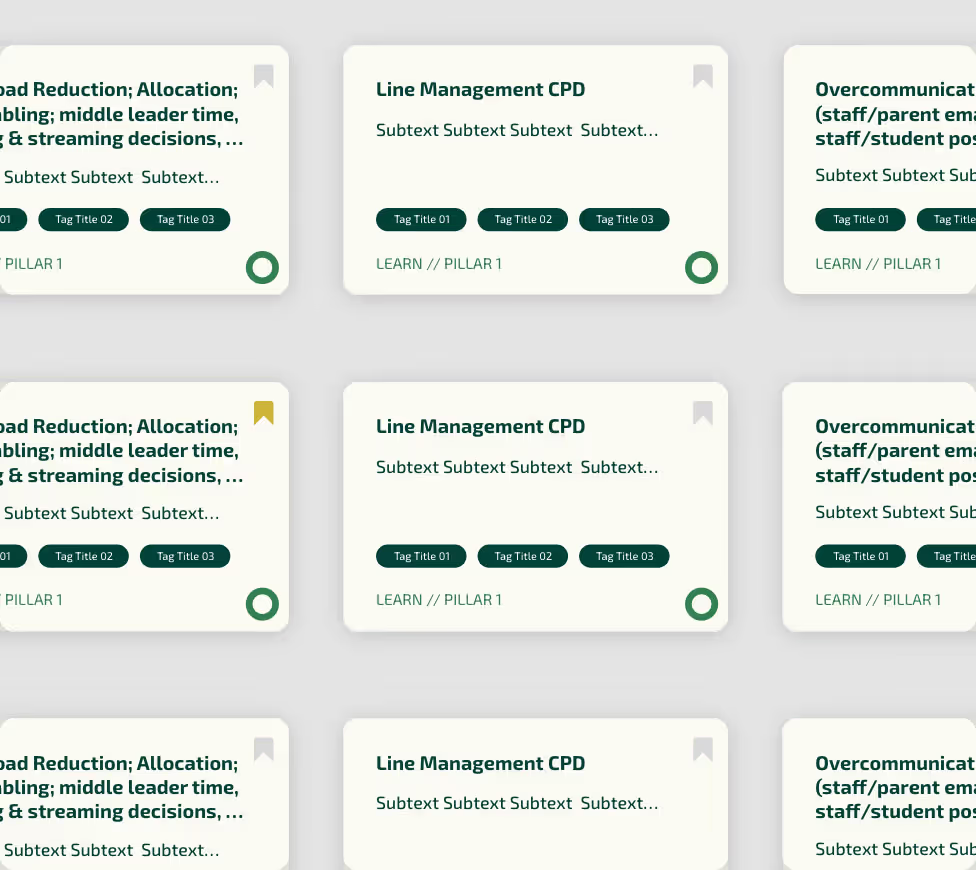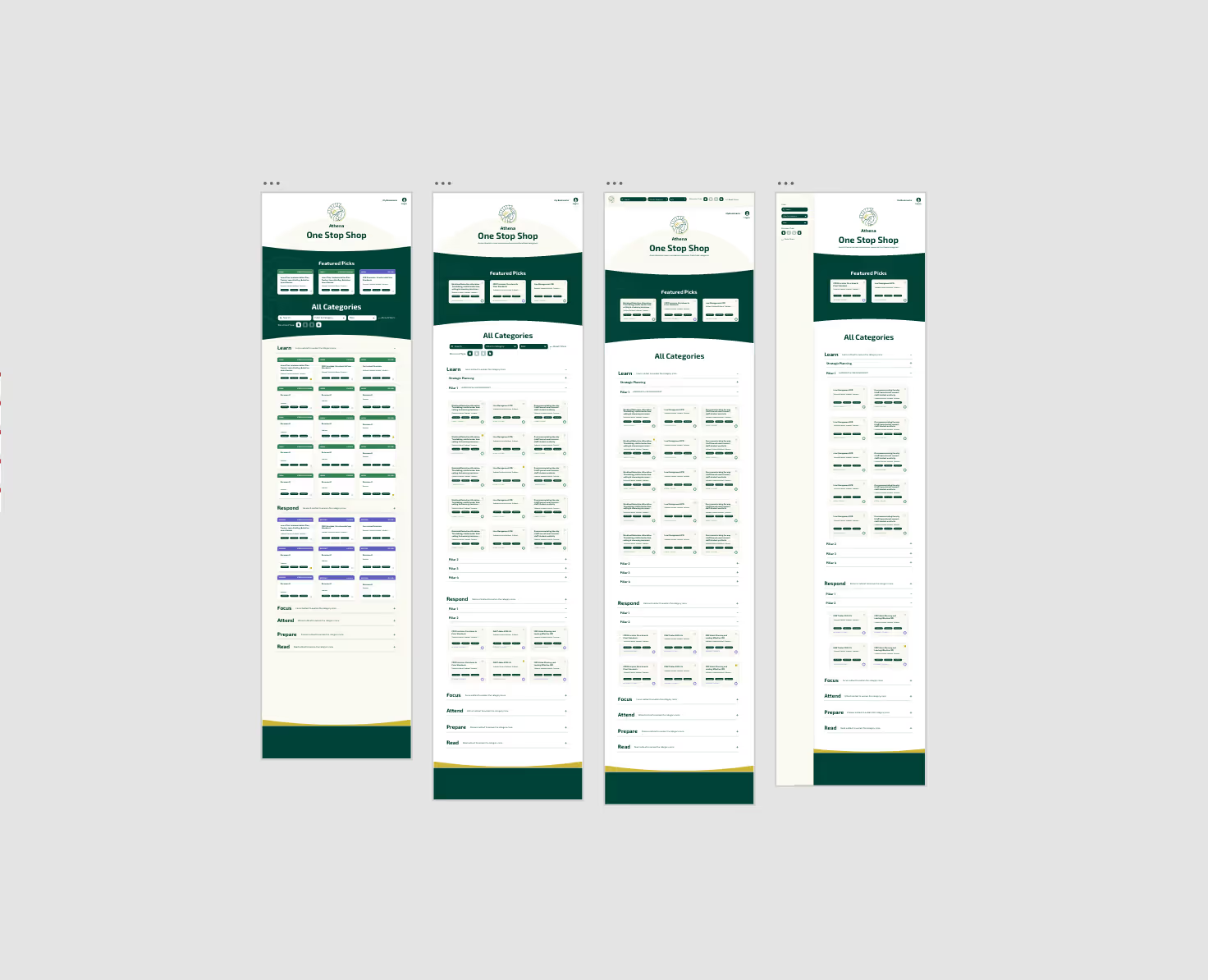A network of independent schools needed a centralised digital platform where teachers could easily access, share, and organise educational resources. Each school had previously managed its own content, resulting in duplication, inconsistent formatting, and difficulty finding relevant materials. The goal was to create a scalable, intuitive platform that unified the resource experience across schools. The platform was designed to serve teachers first, providing an easy way to search, filter, and upload lesson materials, articles, and best practices.

